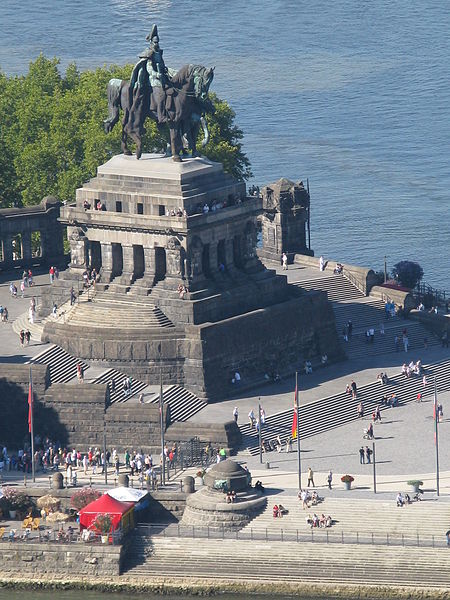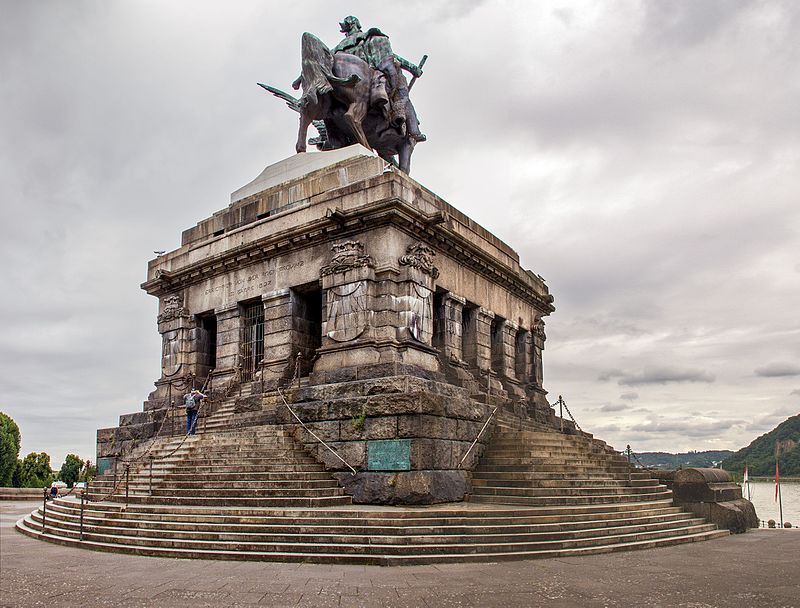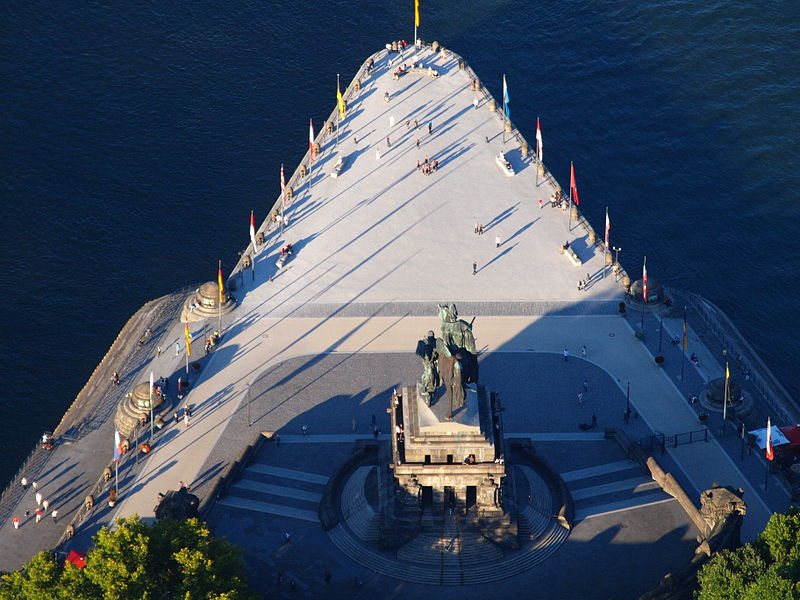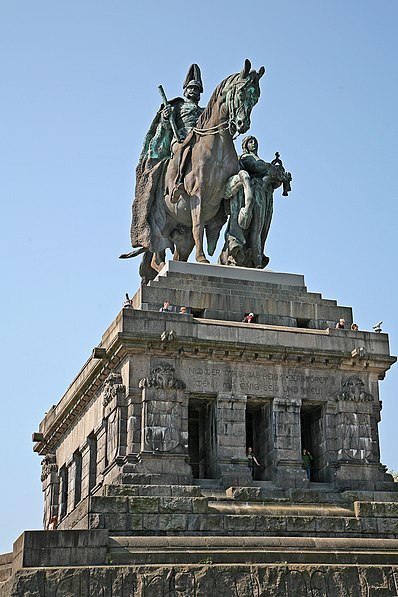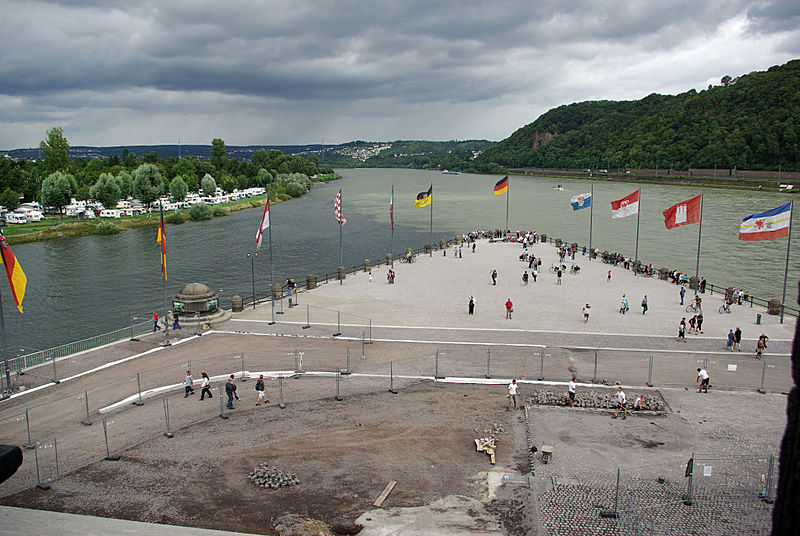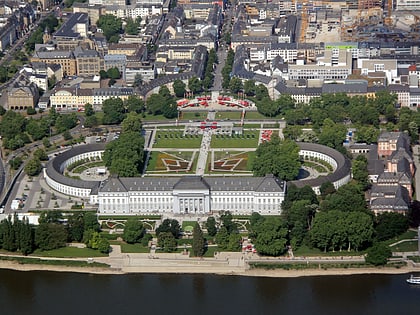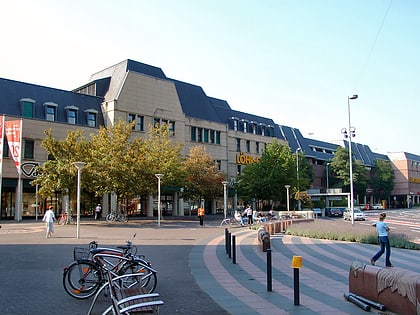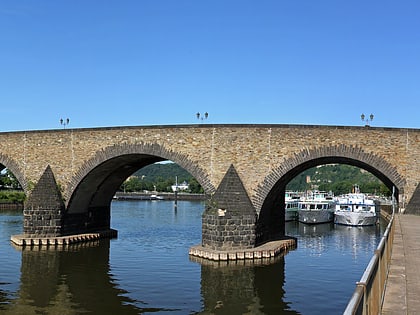Deutsches Eck, Koblenz
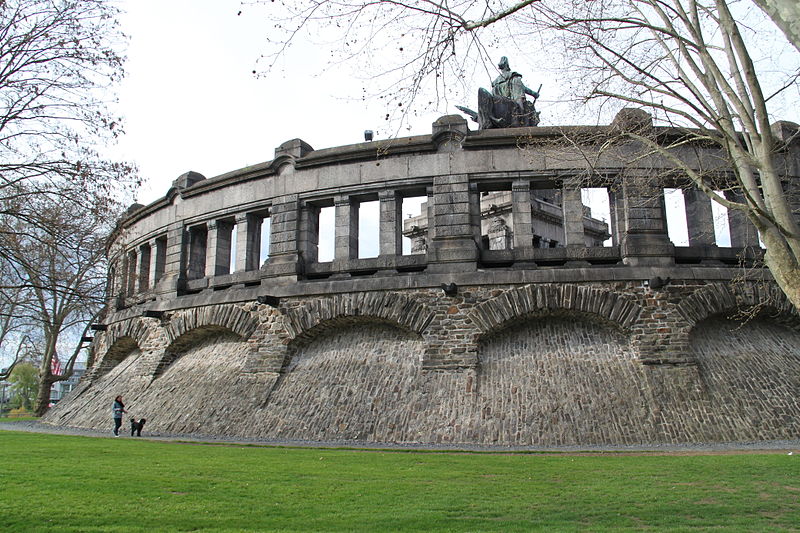
Facts and practical information
Deutsches Eck, or the "German Corner," is a renowned monument situated at the confluence of the Rhine and Moselle rivers in the historic city of Koblenz, Germany. This significant landmark not only offers stunning views of the joining rivers but also serves as a symbol of German unity.
The monument is most notable for its colossal equestrian statue of Emperor William I, which was erected to honor the first German Emperor and his role in the unification of Germany. The original statue was destroyed during World War II, but a replacement was installed in 1993, standing as a towering tribute to German history and resilience.
Visitors to Deutsches Eck can enjoy the meticulously landscaped gardens, take a leisurely stroll along the riverside promenades, or simply soak in the panoramic vistas of the surrounding waterways and cityscape of Koblenz. The site also serves as a starting point for boat tours, offering a unique perspective of the city from the water.
The monument holds an additional layer of significance as it became a place of remembrance for German reunification after the fall of the Berlin Wall. A piece of the wall has been placed at the site, further cementing Deutsches Eck's role as a symbol of national unity.
Deutsches Eck – popular in the area (distance from the attraction)
Nearby attractions include: Middle Rhine, Electoral Palace, Festung Ehrenbreitstein, Basilica of St. Castor.
Frequently Asked Questions (FAQ)
Which popular attractions are close to Deutsches Eck?
How to get to Deutsches Eck by public transport?
Bus
- Deutsches Eck/Seilbahn • Lines: 1 (7 min walk)
- Am alten Hospital • Lines: 1 (8 min walk)
Train
- Koblenz-Ehrenbreitstein (7 min walk)
- Koblenz-Lützel (18 min walk)
Tram
- Stop • Lines: Schrägaufzug Ehrenbreitstein (11 min walk)


